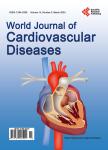Smoking Cessation in the Middle East after Percutaneous Coronary Intervention. Results from the First Jordanian Percutaneous Coronary Intervention Registry (JoPCR1)
Smoking Cessation in the Middle East after Percutaneous Coronary Intervention. Results from the First Jordanian Percutaneous Coronary Intervention Registry (JoPCR1)作者机构:Department of Internal Medicine Istishari Hospital Amman Jordan Department of Medical Education Jordan University of Science and Technology Irbid Jordan School of Allied Medical Sciences Jordan University of Science and Technology Irbid Jordan Department of Cardiology Istishari Hospital Amman Jordan
出 版 物:《World Journal of Cardiovascular Diseases》 (心血管病(英文))
年 卷 期:2016年第6卷第7期
页 面:202-210页
学科分类:1002[医学-临床医学] 100201[医学-内科学(含:心血管病、血液病、呼吸系病、消化系病、内分泌与代谢病、肾病、风湿病、传染病)] 10[医学]
主 题:Smoking Cessation Acute Coronary Syndrome
摘 要:Background: Cigarette smoking (CS) is a major risk factor for cardiovascular disease (CVD) in the Middle East. Little is known about the rate of SC in patients following percutaneous coronary intervention (PCI) and the clinical and angiographic features and one-year outcome among quitters compared with persistent smokers. Methods and Results: Of 2425 patients enrolled in a prospective multicenter PCI registry, 1055 (43.5%) were smokers (mean age 53.7 + 5.7 years) and 94% were males. PCI was indicated for ACS in 862 patients (82%). The rate of CS was 33%, 30% and 31%, at 1, 6 and 12 months after discharge, respectively. Compared with persistent smokers, quitters were more likely to have diabetes (50.4% vs. 42.0%;p = 0.028), low left ventricular ejection fraction (18.1% vs. 9.3%;p = 0.0004), and heart failure (15.4% vs. 9.0%;p = 0.0008). There were no differences between quitters and persistent smokers in age, gender, or severity of coronary lesions. Assessing the major complications and cardiovascular events during the index admission and at one year in non-smokers, quitters and persistent smokers showed that the incidence rates of in-hospital major bleeding events and cardiovascular deaths differed significantly among the three groups of patients (p-value = 0.017 for major bleeding, and 0.012 for cardiovascular death). The rates of these two complications were significantly higher among non-smokers compared to quitters and persistent smokers, and the rate of major bleeding was almost double in quitters compared to persistent smokers. Moreover, the three groups differed significantly in the rates of major bleeding, cardiovascular death and coronary revascularization after one year of follow-up. The incidence rates of major bleeding and cardiovascular death after one year were the highest among non-smokers followed by quitters and persistent smokers. The rate of coronary revascularization was significantly higher in quitters compared to non-smokers and persistent smok



